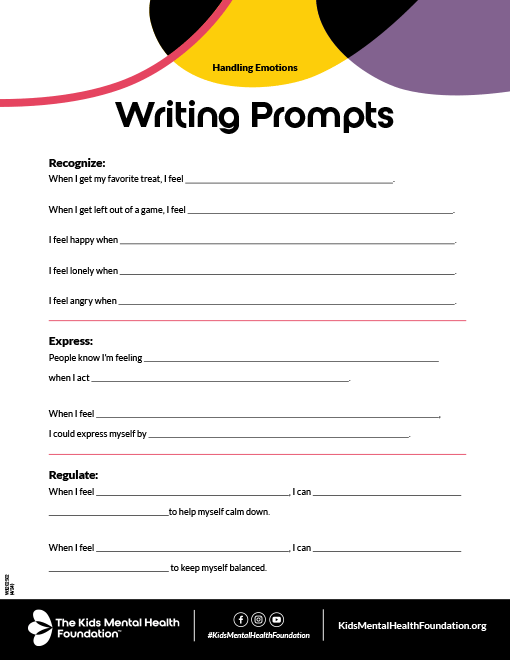- Most kids will experience symptoms of inattention, impulsiveness or restlessness at various times or in certain activities.
- If these symptoms show up often, and interfere with daily routines at home, school or work they could be indicative of ADHD.
- Ways to manage ADHD in children includes therapy, medication and school support.
Helping Kids Notice How They Are Feeling
Article Summary
- Many people struggle to recognize emotions as they feel them. Teaching children to notice and understand their feelings can help them manage those feelings.
- Activities like labeling emotions, discussing past situations and noticing facial expressions can help children recognize and express their emotions.
- Teaching kids to notice how emotions feels in their bodies (e.g., butterflies in the stomach when nervous) can help them understand their feelings better.
- Keeping a daily emotions journal may help children track and understand their feelings, promoting better emotional regulation over time.
Teaching kids how to cope with their emotions is one of the best life skills you can give them. This is what we call emotion regulation, and you can start the moment they’re born! Our experts recommend reading in this order:
- Naming emotions
- Noticing how the emotions feel in their body
- Expressing their emotions
- Coping with their emotions
Like children, we can only express and regulate our emotions if we are able to notice them in real-time and understand how they affect our thoughts and behavior.
Many people find it difficult to recognize emotions as they are feeling them, which can cause them to act in a way they later regret.
Activities to Help Kids Notice How They Are Feeling
These activities will help you teach children how to recognize their emotions in the moment, which will allow them to use better communication, expression and coping skills, when necessary.
Label emotions and the signs
Name your child’s emotions as you notice them and describe how you know they may be feeling a certain way.
Describing behaviors, facial expressions, tone of voice or body language helps you identify how they are feeling. Remember: validate how they are feeling and don't judge the emotion.
For example, “I see your fists are clenched and you’re stomping. It seems like you’re angry.” This highlights the fact we have signs to let other people know how we are feeling.
Talk about past situations
Learning to notice our emotions in the moment can be hard. Once a child is calm following a difficult moment, talk about what happened. Have them name what they were feeling and how their body felt. You can also use personal examples to help normalize this discussion.
Mind-body connection
Help your child learn how to identify emotions early on by noticing how they feel in their body.
For example, some of us feel butterflies in our tummies when we’re nervous, some of us feel our cheeks are hot when we’re angry, and some of us feel like there’s a hole in our chest when sad.
Use our download to get creative and have your child draw what their emotions feel like in their body.
Draw different scenarios
Have children draw pictures of things or situations that make them feel happy, sad, angry, nervous, etc.
Ask them about what they drew and talk about how they knew they were feeling that emotion in the moment.
You can also help kids remember certain situations where they tend to experience a particular emotion, like when they see a good friend (happy/excited), when they get dropped off at school (nervous/worried), or when a sibling takes a toy from them (angry/mad). This will help them recognize these emotions sooner in the future.
Keep a daily emotions journal
Have your children keep a daily emotion journal where they write or draw about the emotions they are feeling in that moment and what they have experienced throughout the day. Encourage them to describe how their body felt in that moment and how they knew what they were feeling.
Remember, your goal is to teach your child how to notice an emotion early, so they can be more purposeful with their choices instead of letting their emotion control them. At first, the adults need to do most of the work, but over time, you will notice children start to recognize their emotions earlier and can start to take action. As they learn to catch their emotion in the moment, you can start teaching them how to express what they are feeling.
 Copy Link
Copy Link






